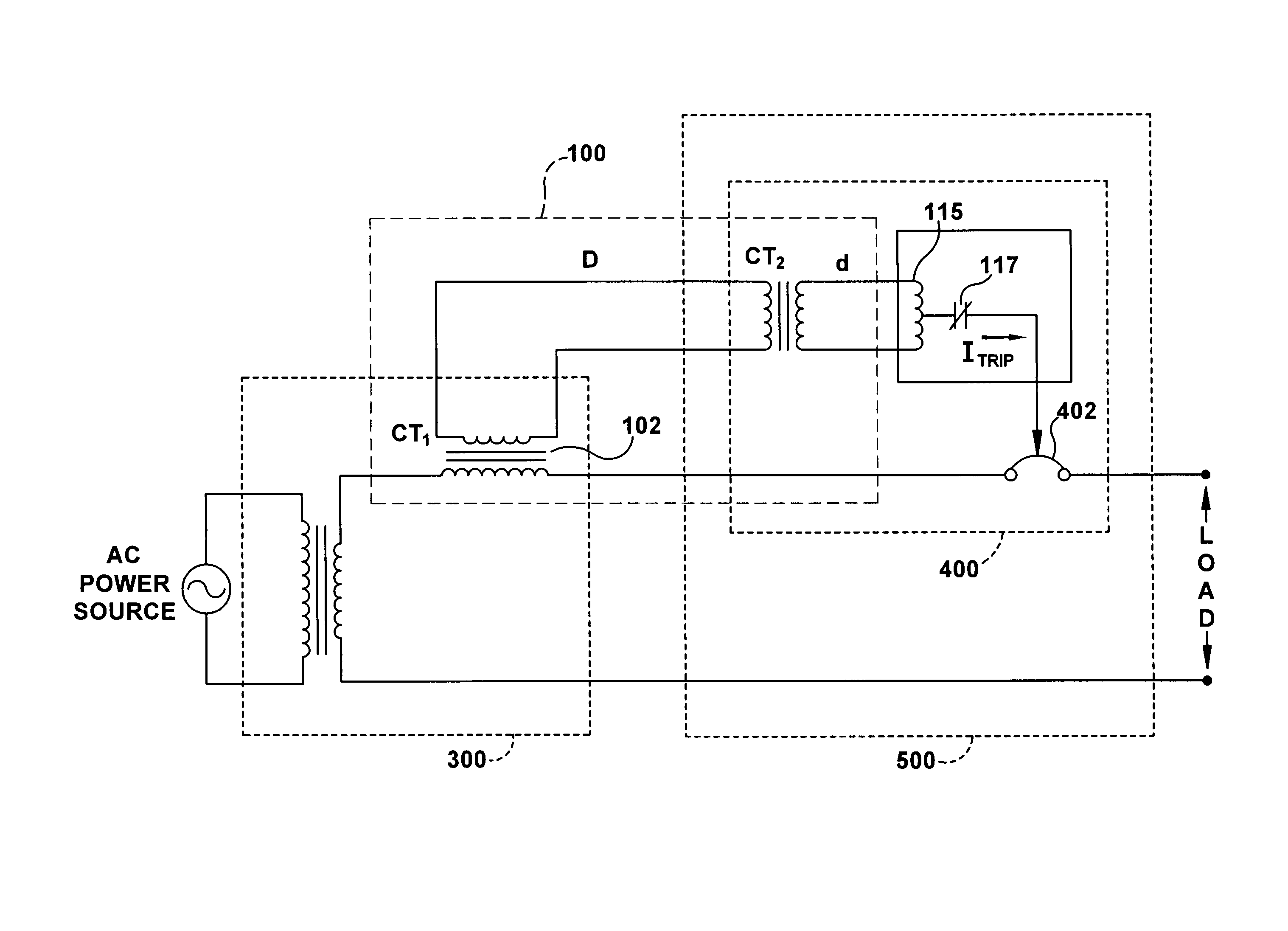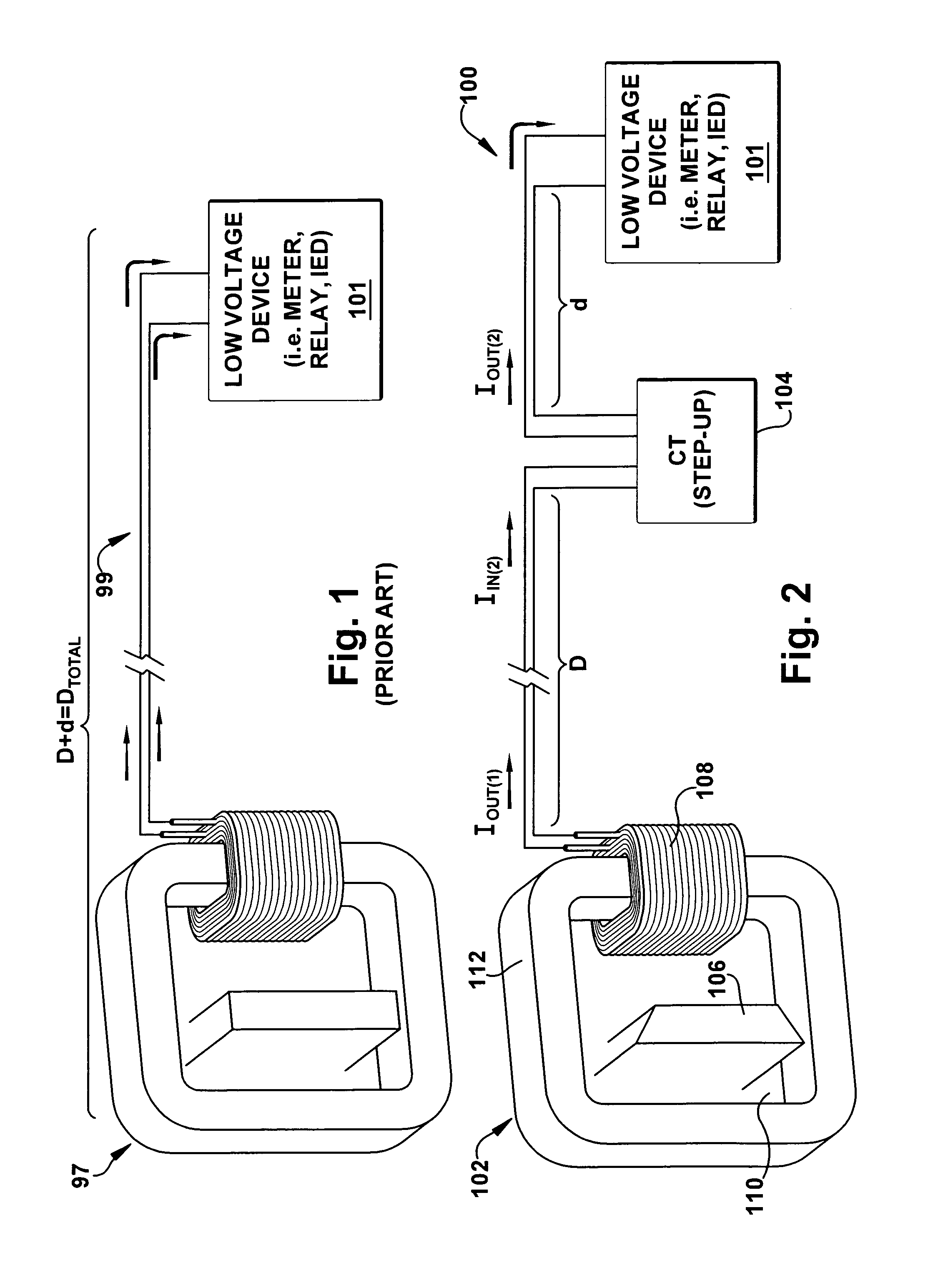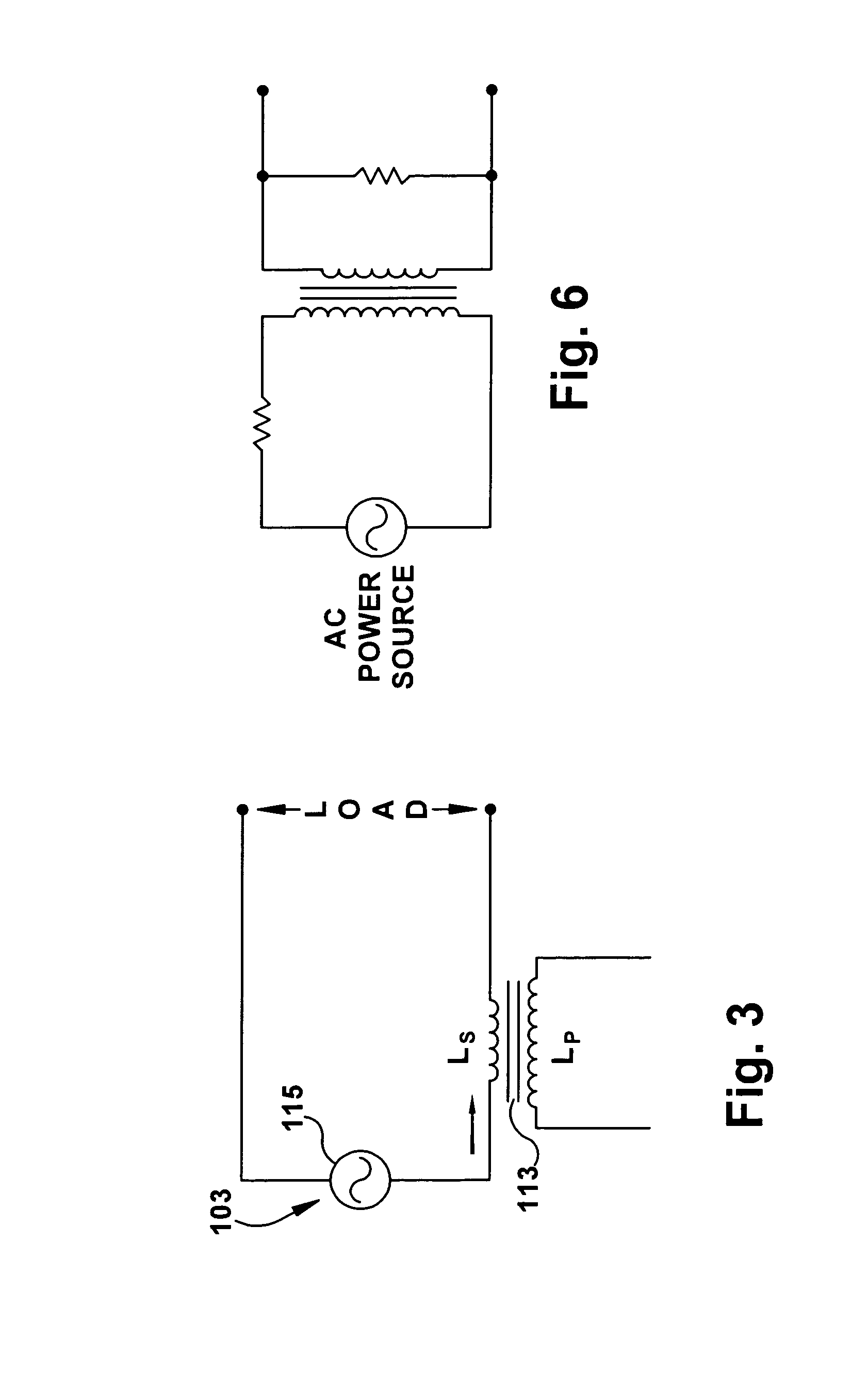Current sensing apparatus
a current sensing and current technology, applied in the direction of measurement devices, instruments, measurement using dc-ac conversion, etc., can solve the problems of line loss associated with current flow, save shipping and mounting support costs, and achieve the effect of saving support costs
- Summary
- Abstract
- Description
- Claims
- Application Information
AI Technical Summary
Benefits of technology
Problems solved by technology
Method used
Image
Examples
Embodiment Construction
[0036]In describing present invention, reference will be made herein to FIGS. 1-10 of the drawings in which like numerals refer to like features of the present invention. Referring now to the drawings, wherein like reference numerals designate identical or corresponding parts throughout the several views, one of the embodiments of the current sensing apparatus of the invention will be described. One of the advantageous aspects of an embodiment of the invention described here is a novel current sensing apparatus that smaller, lighter, and less expensive than previous current sensing apparatus while it is also accurate and conserves energy.
[0037]FIG. 2 illustrates a schematic block diagram of a current sensing apparatus 100 (also known as the current sensor system or Cascade Sensor System (CSS) of one embodiment of the present invention, supplying current to a device 101. The term “cascade” generally means “something arranged or occurring in a series or in a succession of stages so th...
PUM
 Login to View More
Login to View More Abstract
Description
Claims
Application Information
 Login to View More
Login to View More - R&D
- Intellectual Property
- Life Sciences
- Materials
- Tech Scout
- Unparalleled Data Quality
- Higher Quality Content
- 60% Fewer Hallucinations
Browse by: Latest US Patents, China's latest patents, Technical Efficacy Thesaurus, Application Domain, Technology Topic, Popular Technical Reports.
© 2025 PatSnap. All rights reserved.Legal|Privacy policy|Modern Slavery Act Transparency Statement|Sitemap|About US| Contact US: help@patsnap.com



